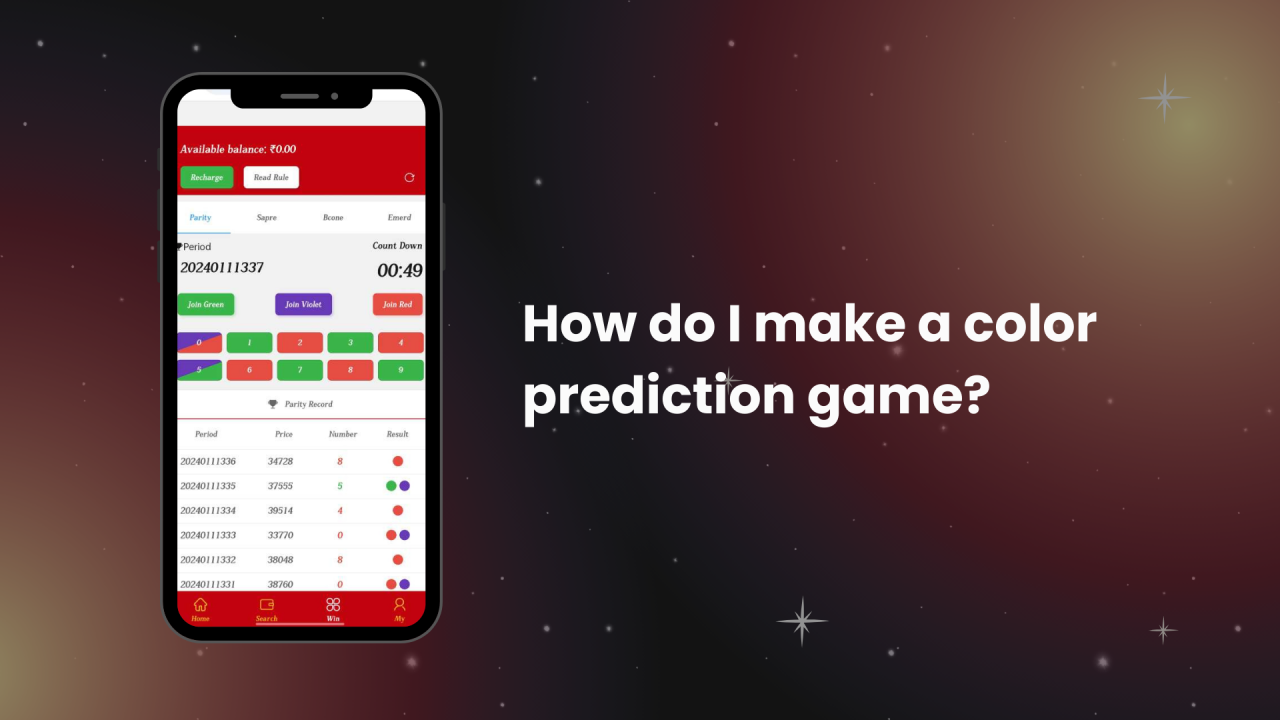In recent times, the rise of color prediction apps has sparked significant debate. These apps, often marketed as entertainment platforms, allow users to predict the outcome of virtual color-based games and potentially win money. However, the ethical implications and addictive nature of these apps have come under scrutiny. In this article, we’ll delve into the phenomenon of color prediction apps, exploring their mechanics, controversies, and impact on users.
1. The Mechanics of Color Prediction Apps:
- How do these apps work? Typically, users are presented with a series of colors and must predict the next color in the sequence. If their prediction matches the outcome, they win money or points.
- The simplicity of the game mechanics makes it accessible to a wide audience, particularly younger users.
2. Entertainment or Gambling?
- While marketed as harmless entertainment, color prediction apps bear a striking resemblance to gambling activities.
- Users often invest real money with the hope of making a profit, blurring the lines between entertainment and gambling.
- The addictive nature of these apps can lead to financial losses and psychological distress, particularly among vulnerable individuals.
3. Controversies Surrounding Color Prediction Apps:
- Legal concerns: Many countries have strict regulations regarding online gambling. The legality of color prediction apps varies from region to region, leading to regulatory ambiguity.
- Ethical considerations: Critics argue that these apps exploit human psychology, leveraging elements of reward and uncertainty to encourage continued engagement.
- Impact on society: The proliferation of color prediction apps has raised concerns about the normalization of gambling behaviors, particularly among younger demographics.
4. User Experience and Engagement:
- Design features: Colorful interfaces, enticing rewards, and social elements contribute to the addictive nature of these apps.
- Psychological tactics: The use of variable rewards and intermittent reinforcement mechanisms keeps users engaged and coming back for more.
5. Addressing the Issues:
- Regulatory measures: Governments and regulatory bodies are called upon to establish clear guidelines and regulations regarding color prediction apps to protect consumers.
- Awareness and education: Increased awareness about the risks associated with these apps, along with education about responsible gambling practices, can help mitigate their negative impact.
- Technological interventions: Implementing features such as spending limits, self-exclusion options, and age verification mechanisms can promote responsible usage.
Conclusion:
Color prediction apps represent a complex intersection of entertainment, technology, and gambling. While they offer seemingly harmless fun, their potential to foster addictive behaviors and financial harm cannot be ignored. It’s imperative for stakeholders—developers, regulators, and users alike—to address these issues collectively to ensure a safer digital environment for all.
